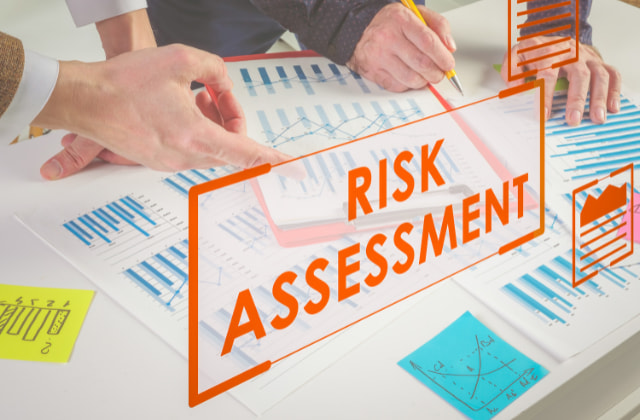Checking out the Importance of Risk Management for Effective Decision-Making Methods
In the detailed world of company, Risk Management arises as a crucial aspect in the decision-making procedure. The ability to identify prospective hazards and opportunities, and strategize appropriately, can lead to the difference between success and failing.
Understanding the Idea of Risk Management
Risk Management, a critical component in decision-making, is frequently misinterpreted or oversimplified. Typically, it describes the identification, examination, and prioritization of threats to decrease, monitor, and control the likelihood or influence of unfavorable occasions. However, it's not merely about protecting against negative outcomes, however likewise concerning recognizing prospective chances. Risk Management entails organized and self-displined techniques, making use of data and insightful evaluations. It needs an extensive understanding of the organization's context, goals, and the possible threats that can combat them. From financial uncertainties, legal responsibilities, strategic Management errors, to accidents and natural catastrophes, it deals with various dangers. Notably, reliable Risk Management is not stagnant; it's a continuous, progressive process that progresses with transforming scenarios.
The Role of Risk Management in Decision-Making Processes
In the world of calculated planning and organization procedures, Risk Management plays an essential function in decision-making procedures. It assists in identifying possible dangers and uncertainties that might impact the success of business goals. By tracing these risks, business can formulate approaches to reduce their impact, making certain business connection and security. Risk Management therefore comes to be an important device in decision-making, aiding leaders to make enlightened options based on a thorough understanding of the dangers involved. It encourages a proactive strategy, enabling organizations to prepare and anticipate for feasible future circumstances. This significantly reduces the possibility of unfavorable consequences, promoting much more effective and efficient decision-making strategies. Risk Management offers as a vital component in the decision-making processes of any company.

Just How Risk Management Enhances Strategic Preparation
In the context of critical preparation, Risk Management plays a crucial duty. Starting with the identification of possible threats, it additionally expands to the implementation of Risk reduction procedures. The role of Risk Management is not fixed however dynamic, as it demands consistent surveillance and adjusting of techniques.
Determining Prospective Threats

Applying Risk Reduction
Having established the significance of recognizing possible risks, the next step is to explore Risk mitigation. This procedure involves creating and implementing strategies to handle identified risks properly. It is an essential aspect of strategic YOURURL.com preparation as it boosts decision-making by decreasing potential adverse outcomes. Risk reduction approaches can vary from Risk evasion, Risk transfer, to risk reduction. Each strategy should be customized to the particular Risk, considering its possible influence and the organization's Risk resistance. Reliable Risk reduction needs a deep understanding of the Risk landscape and the possible effect of each Risk. This understanding makes it possible for organizations to focus on dangers and assign sources effectively, making sure that the most substantial dangers are dealt with initially.
Surveillance and Adjusting Methods
Though Risk mitigation is a vital action in calculated planning, constant monitoring and modification of these approaches is equally vital. This ongoing process permits companies to identify new threats and reassess existing ones, ensuring the carried out approaches remain efficient in the ever-changing organization environment. It also supplies a possibility to evaluate the success of the Risk Management actions, allowing adjustments to be made where required, more boosting critical planning. Efficient tracking and modification call for making use of analytics and key performance indicators (KPIs) to determine performance. These tools offer useful data-driven understandings that can educate critical decision-making. Therefore, monitoring and adjusting Risk Management approaches is a crucial element for enhancing an organization's durability and tactical planning.
Case Researches: Effective Risk Management and Decision-Making
In the globe of company and money, successful Risk Management and decision-making typically offer as the pillars of flourishing enterprises. These instances highlight the value of astute Risk Management in decision-making processes. These cases emphasize the crucial duty of Risk Management in critical decision-making.
Tools and Methods for Reliable Risk Management
These devices, such as Risk registers and heat maps, aid in determining and examining possible threats. view it now Risk reaction techniques, a vital element of Risk Management, include accepting, preventing, transferring, or mitigating risks. With these devices and strategies, decision-makers can navigate the complex landscape of Risk Management, consequently promoting educated and efficient decision-making.
Future Patterns in Risk Management and Decision-Making Methods
As we discover the large landscape of Risk Management, it comes to be obvious that the tools and strategies made use of today will certainly find this continue to advance. The concept of Risk society, where every member of a company is aware and entailed in Risk Management, will certainly get more importance. These patterns herald a more aggressive and inclusive strategy towards Risk Management and decision-making.
Verdict

Risk Management hence becomes an essential device in decision-making, aiding leaders to make informed selections based on a detailed understanding of the risks included. Risk reduction approaches can range from Risk avoidance, Risk transfer, to run the risk of reduction (importance of risk management). Effective Risk mitigation calls for a deep understanding of the Risk landscape and the potential influence of each Risk. Risk reaction techniques, an essential component of Risk Management, entail accepting, staying clear of, moving, or mitigating risks. The principle of Risk society, where every participant of an organization is aware and involved in Risk Management, will certainly gain a lot more prestige